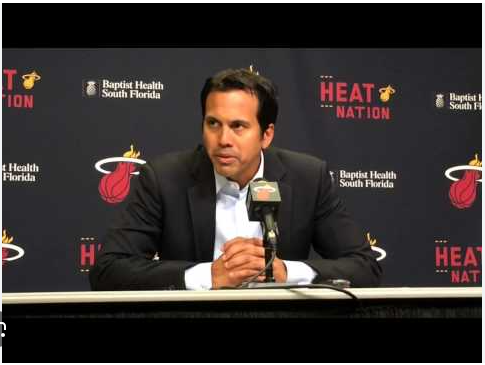Jimmy Butler has reportedly expressed interest in potentially playing for another team in the Eastern Conference, sparking speculation about his future with the Miami Heat. The team most commonly linked with Butler’s interest is the **Milwaukee Bucks**. Butler’s admiration for the Bucks’ competitive spirit, championship pedigree, and the chance to play alongside a superstar like Giannis Antetokounmpo make Milwaukee an intriguing destination.
### **Why the Bucks?**
1. **Championship Contention**: The Bucks are perennial contenders with a strong core, and Butler’s addition would further solidify their position as one of the top teams in the league.
2. **Giannis Antetokounmpo Partnership**: Butler and Giannis would form a formidable duo, combining elite two-way play, leadership, and a relentless work ethic that could dominate both ends of the court.
3. **Familiar Playoff Atmosphere**: Butler’s competitive nature aligns well with Milwaukee’s playoff environment, and he has a history of performing at a high level in postseason battles against the Bucks.
### **Challenges and Considerations**:
– **Cap Space and Contracts**: Acquiring Butler would require navigating complex financial terrain, given his max contract and the Bucks’ existing salary commitments.
– **Trade Assets**: The Bucks would need to offer a valuable package that might include draft picks, young players, or current contributors to make a deal viable for the Heat.
While Butler remains committed to the Heat for now, his interest in the Bucks signals a desire to align with a team that shares his championship aspirations. However, any potential move would involve navigating significant financial and logistical hurdles.
If Jimmy Butler were to be traded to the Milwaukee Bucks, the deal would be complex due to his large contract and the Bucks’ current salary cap situation. Here’s a possible outline of what a trade could look like, considering both teams’ needs and the logistical challenges:
### **Potential Trade Details:**
**Trade Proposal:**
– **Miami Heat Receive:**
– Khris Middleton (SF)
– MarJon Beauchamp (SG)
– Future 1st Round Pick(s)
– Additional 2nd Round Pick(s) or pick swaps
– **Milwaukee Bucks Receive:**
– Jimmy Butler (SF)
### **Why This Trade Works:**
1. **For the Heat:**
– **Cap Relief and Flexibility:** Acquiring Khris Middleton, who is a productive scorer and playmaker, gives the Heat an immediate replacement for Butler while also providing potential cap relief since Middleton’s contract has a player option and shorter length.
– **Youth and Picks for the Future:** MarJon Beauchamp is a promising young player with potential upside, adding to the Heat’s developmental core. The addition of future draft picks helps Miami stockpile assets for potential future moves or rebuild phases.
2. **For the Bucks:**
– **Immediate Contention:** Adding Butler would elevate the Bucks’ championship chances, giving them an elite two-way player alongside Giannis Antetokounmpo. Butler’s leadership, defensive tenacity, and clutch scoring would fit seamlessly with the Bucks’ playoff ambitions.
– **Upgrade on the Wing:** Butler provides an upgrade in terms of defensive versatility and scoring, potentially making the Bucks’ lineup one of the most formidable in the NBA.
### **Challenges to the Trade:**
– **Salary Cap Concerns:** Both Butler and Middleton have substantial contracts, so the trade would need to match salaries closely to comply with NBA trade rules.
– **Luxury Tax Implications:** The Bucks would likely face luxury tax penalties due to Butler’s contract, which could impact the deal’s feasibility from a financial standpoint.
– **Heat’s Willingness to Trade Butler:** Miami would need to be willing to part with Butler, which may only happen if they feel his window with the team has closed or if they believe the return package is strong enough to justify moving on.
### **Alternative Assets:**
– The Bucks could consider adding more picks or swapping additional players to sweeten the deal, such as Grayson Allen or other role players, to make the trade more appealing to the Heat.
– The Heat might also push for more unprotected picks or pick swaps, maximizing their long-term upside.
Ultimately, this trade framework provides a starting point for negotiations between the two teams, with both sides needing to balance immediate goals with future flexibility.

